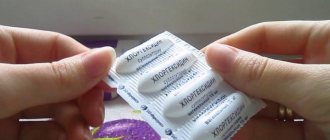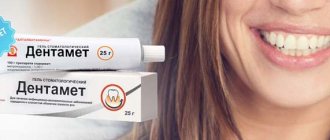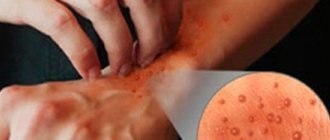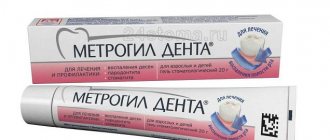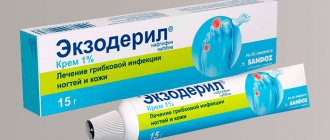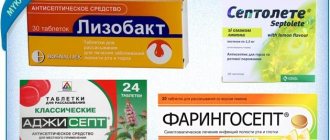Home \ Medicines \ Solutions for external use \ Chlorhexidine Bigluconate
Buy (Chlorhexidine Bigluconate)
- Chlorhexidine bigluconate 0.05%, produced by YuzhPharm
- Chlorhexidine bigluconate, produced by Rosbio
Chlorhexidine bigluconate 0.05% Produced by YuzhPharm
Chlorhexidine bigluconate 0.05% Manufactured by YuzhPharm , is a ready-to-use product in the form of a clear or slightly opalescent liquid, colorless or light yellow, odorless or with a slight odor. Chlorhexidine bigluconate 0.05% with dropper nozzle - 100 ml price: 19.50 rub.
Chlorhexidine bigluconate 0.05% is intended for use in medical institutions: hygienic treatment of the hands of medical personnel, including personnel of ambulances; cleaning the hands of surgeons, operating nurses, midwives and other persons involved in operations and childbirth; hygienic treatment of the hands of medical personnel of medical institutions, the hands of medical workers of preschool and school institutions, social security institutions. And also for the hygienic treatment of hands of students in educational institutions; hygienic treatment of hands of workers of perfumery, cosmetics, chemical and pharmaceutical enterprises, public utility facilities; workers of food enterprises, public catering enterprises and food trade enterprises. Hygienic treatment of hands of workers of poultry, livestock, pig and fur farms; hand treatment for the population, protection from microbes in public places, in nature, and also as a prophylactic agent in the form of irrigation, rinsing and applications on the surface of the skin and mucous membranes.
Trade name of the drug: Chlorhexidine bigluconate 0.05% - YuzhPharm International nonproprietary name (INN):
Chlorhexidine
Composition: As an active ingredient, it contains chlorhexidine bigluconate 0.05%, purified water Group: Disinfectant Packaging: Packaging is carried out in 25 ml, 50 ml, 100 ml in orange glass bottles with a screw neck, sealed with polyethylene stoppers and screw-on caps. 25 ml, 50 ml, 100 ml, 200 ml, 500 ml, 1000 ml in high-pressure polyethylene bottles with a polymer nozzle or a special nozzle with a screw cap, or equipped with a spray pump and a protective polyethylene cap. 5 l, 10 l, 20 l in canisters made of low-density polyethylene (for hospitals). Glass bottles of 25 ml, 50 ml, 100 ml are placed in boxes with partitions or corrugated cardboard bars. Bottles of 25 ml, 50 ml, 100 ml, 200 ml, 500 ml, 1000 ml made of high-density polyethylene should be packaged in polyethylene shrink film or in a box with partitions or grids made of corrugated cardboard. Polyethylene canisters are placed in a wooden pallet, no more than 2 rows high, and covered with stretch film.
PROPERTIES: The product is bactericidal against gram-positive and gram-negative bacteria (including pathogens of nosocomial infections), tuberculocidal, virucidal (acute respiratory viral infections, herpes, polio, hepatitis of all types, including hepatitis A, B and C, HIV infection , adenovirus, etc.) and fungicidal (against fungi of the genera Candida and Trichophyton) action. According to the parameters of acute toxicity, “Chlorhexidine bigluconate 0.05% - YuzhPharm” belongs to class 4 of low-hazardous substances according to GOST 12.1.007-76 when applied to the skin, introduced into the stomach and inhaled. According to the classification of Sidorov K.K. when administered parenterally, the drug belongs to class 5 of practically non-toxic compounds. Skin-resorptive and sensitizing properties in the recommended modes of use of the product have not been identified. The product has a moderate irritant effect on the mucous membranes of the eyes. The maximum permissible concentration in the air of the working area of chlorhexidine bigluconate is 1 mg/m3. The product can be used to treat the skin of children from birth. INDICATIONS FOR USE: The product "Chlorhexidine digluconate 0.05% - YuzhPharm" is intended for use in medical institutions: for hygienic treatment of the hands of medical personnel, including personnel of ambulances; for disinfecting the skin of the injection field; for sanitary treatment of the skin and the skin of the feet to prevent fungal diseases; for disinfection of rubber gloves worn by personnel (made of materials resistant to chemicals) during surgical interventions and manipulations requiring surgical antiseptics, when working with potentially infected material (microbiological and other laboratories); when collecting medical waste of classes B and C. for disinfection of small instruments of simple configuration; as a prophylactic agent in the form of irrigation, rinsing and application on the surface of the skin, mucous membranes; for hygienic treatment of hands of students of general education institutions, staff of preschool and school institutions, social security institutions (nursing homes, hospices, etc.), employees of perfumery and cosmetics enterprises (including hairdressers, beauty salons, etc.), public food, communal facilities, food and chemical-pharmaceutical industries; for hygienic treatment of the skin of the hands, injection field, sanitary treatment of the skin and skin of the feet for the purpose of preventing fungal diseases, as a prophylactic for the population in everyday life.
CONTRAINDICATIONS: Skin-resorptive and sensitizing properties have not been identified in the recommended modes of use. The product has a moderate irritant effect on the mucous membranes of the eyes.
METHOD OF APPLICATION: Hygienic treatment of hands: 3 ml of the product is applied to the hands and rubbed into the skin until dry for 30 seconds. Treatment of the injection field, incl. at the site of vaccination: the skin is wiped with a sterile cotton swab or irrigated until completely moisturized, followed by holding for 30 seconds. Preventive treatment of the feet, sanitary treatment of the skin: with a copiously moistened cotton swab, carefully treat each foot or area of skin with different cotton swabs or irrigate with the product until the skin is completely moistened, holding time for at least 30 seconds. Processing of gloves worn by personnel: the outer surface of the gloves is thoroughly wiped with a sterile swab, generously moistened with the product. Processing time – at least 1 minute. Exposure - until the surface of the gloves is completely dry. Small instruments of a simple configuration: (in healthcare facilities, beauty salons, hairdressers, manicure and pedicure rooms, etc.) must be completely immersed in the product immediately after its use. The thickness of the layer of product above the products must be at least 1 cm. After the disinfection period of 5 minutes is completed, the products are removed from the container and washed with running drinking water for at least 1 minute. As a prophylactic agent in the form of irrigation, rinsing and application - 5-10 ml of solution is applied to the surface of the skin or mucous membranes with an exposure of 1-3 minutes 2-3 times a day (on a tampon or by irrigation).
SPECIAL INSTRUCTIONS:
Use for external use only. Do not use the product after the expiration date. If the product accidentally gets into the stomach, it is recommended to drink several glasses of water with the addition of an adsorbent (for example, 10-15 crushed tablets of activated carbon per glass of water). Do not induce vomiting! If necessary, seek medical help.
RELEASE FORM:
The product is packaged in 25 ml, 50 ml, 100 ml in orange glass bottles. 25 ml, 50 ml, 100 ml, 200 ml, 500 ml, 1000 ml in high-pressure polyethylene bottles with a polymer nozzle, or with a special nozzle with a screw cap, or equipped with a spray pump and a protective polyethylene cap. 5 l each; 10 l; 20 liters in low-density polyethylene canisters (for hospital use).
STORAGE AND TRANSPORTATION CONDITIONS:
Store in tightly closed manufacturer's packaging at temperatures from 0 ºС to +30 °С; away from sources of heat and fire; Avoid storage in direct sunlight. No smoking! Store separately from medications, out of the reach of children. Transportation by any means of transport is allowed in accordance with the rules for the carriage of goods in force for this type of transport, at temperatures from 0 ° C to +30 ° C.
BEST BEFORE DATE:
The product's shelf life is 2 years in unopened manufacturer's packaging.
CONDITIONS FOR DISCHARGE FROM PHARMACIES: Without a prescription.
Manufacturer: YuzhFarm, Russia
pharmachologic effect
An aqueous solution of Chlorhexidine digluconate has a local antiseptic effect, predominantly bactericidal. This product is a dichlorine-containing biguanide . It affects the body by changing the properties of the cell membrane of microorganisms. The cations that were formed due to the dissociation of chlorhexidine salts react with the bacterial membranes, which have a negative charge. The effect of the drug contributes to the destruction of the cytoplasmic membrane of the bacterium, its balance is disturbed and the bacterium eventually dies.
A solution of Chlorhexidine bigluconate 0.05%, gluconate 20% effectively destroys a number of strains of microorganisms. These are Neisseria gonorrhoeae, Trichomonas vaginalis, Bacteroides fragilis, Chlamydia spp., Gardnerella vaginalis, Treponema pallidum. The drug is also active against Ureaplasma spp., and also has a moderate active effect against certain strains of Proteus spp. and Pseudomonas spp.
herpes ) and fungal spores demonstrate resistance to the drug
Rinse with Chlorhexidine is used for washing hands or for treating skin. Chlorhexidine digluconate has a long-term antibacterial effect, so the drug can be used to treat the surgeon’s hands and the surgical field.
The product retains its antimicrobial activity in the presence of pus, blood, etc., but a decrease in its effectiveness is noted.
Indications for use
What the antiseptic is used for can be found in the detailed instructions for the drug. It is widely used to treat diseases that are caused by microorganisms sensitive to the influence of Chlorhexidine, and for their prevention.
The medicine is used to treat certain diseases depending on the concentration of the solution.
A solution of 0.05%, 0.1% and 0.2% is widely used to prevent infectious diseases after surgical interventions. It is used in dentistry to process dentures. Dentists determine how to use Chlorhexidine in dentistry during various procedures, and also use it for stomatitis and periodontitis for rinsing gums.
Skin treatment is practiced in urology (if penetration into the urethra, etc.), surgery, gynecology, before and after surgery, to prevent infection. The use of the product in gynecology is practiced for the purpose of disinfecting mucous membranes and skin before carrying out a series of manipulations. How to use the solution depends on the type of procedure or manipulation.
In gynecology, Chlorhexidine is also used for thrush . To get rid of thrush, a woman is recommended to douche according to a special scheme.
Chlorhexidine is used in the treatment of many dermatological diseases of both bacterial and fungal origin. The use of the drug is also indicated in the presence of purulent wounds, diseases of the mucous membranes provoked by microorganisms sensitive to the active substance of the drug.
What Chlorhexidine is is known to those who have been seriously injured. The product is often used to treat wounds and damaged skin to prevent infection. What it is, and whether it is worth using the product in a particular case, is determined by the doctor.
Chlorhexidine bigluconate solution is used to prevent sexually transmitted diseases - genital herpes , chlamydia , trichomoniasis , syphilis , gonorrhea .
Chlorhexidine digluconate solution 0.5% is used to treat damage to mucous membranes and skin, as well as for the treatment of medical instruments (the solution temperature should be 70 degrees Celsius).
Chlorhexidine bigluconate solution 1% is used to prevent infection of burns and wounds, for disinfection before operations, as well as for the treatment of instruments and devices that cannot be subjected to heat treatment.
Chlorhexidine bigluconate solution 5% and 20% is used when preparing solutions based on water, glycerin or alcohol.
Use during pregnancy and lactation
The drug Chlorhexidine, if necessary, can be used to treat pregnant women. During the clinical trials, no teratogenic or embryotoxic effect of the drug on the child’s body was revealed, even if the solution was used in the first weeks of pregnancy.
Chlorhexidine solution can be used by pregnant women immediately 1-2 weeks before birth to sanitize the birth canal and treat colpitis, vaginitis, and thrush.
The drug Chlorhexidine biglukont can be used externally and topically for nursing mothers. To do this, it is not necessary to interrupt lactation.
Contraindications
The following contraindications to the use of this product are noted:
- High sensitivity to the components of the product.
- Not used to treat patients suffering from dermatitis .
- Do not use at the same time with other antiseptics ( hydrogen peroxide , etc.).
- It is not advisable to use it for disinfection of the surgical field before surgery or after interventions on the central nervous system and auditory canal.
- Not used in ophthalmology (the answer to the question whether it is possible to wash the eyes with this product is negative, since in ophthalmology only a specially prepared solution is used).
- For the treatment of children, use with caution.
Side effects
When using Chlorhexidine bigluconate during treatment, the following side effects were observed in some patients:
- dry skin;
- itchy skin;
- the appearance of a rash;
- dermatitis;
- photosensitivity.
With prolonged use of mouth rinses and irrigation, taste sensations may change, tartar , and teeth discoloration may occur.
Chlorhexidine bigluconate, instructions for use (Method and dosage)
The instructions for Chlorhexidine stipulate that aqueous and alcoholic solutions of Chlorhexidine are used for the local treatment of infectious diseases.
Instructions for the use of Chlorhexidine bigluconate for the prevention of sexually transmitted diseases are as follows. A 0.05% solution is used no later than two hours after unprotected sexual intercourse. For men, 2-3 ml of the product is injected into the urinary canal, for women, 1-2 ml is injected into the urinary canal and another 5-10 ml into the vagina (like douching in gynecology). It is also advisable to treat the skin near the genitals with the solution. The instructions on how to use the drug in this case contain a warning that urination should be done no earlier than 2 hours after using the drug. Otherwise, the effectiveness of the action decreases.
For prevention in this case, suppositories with Chlorhexidine bigluconate can also be used.
How to douche with Chlorhexidine for thrush and other gynecological diseases, and whether it is possible to douche when certain symptoms appear, you should definitely ask your gynecologist in advance. For douching, a ready-made solution of 0.05% is used, which does not require additional dilution. Before douching, you need to lie down horizontally and, after squeezing a few drops of the product from the bottle into the vagina, lie down for a few minutes. If allergic reactions develop, such procedures should not be performed.
The method of using Chlorhexidine for inflammatory diseases of the urinary tract is as follows: 2-3 ml of 0.05% is injected into the urinary canal once or twice a day. The course of treatment lasts 10 days. This method of application is practiced in men and women.
To treat burns, wounds and other skin injuries, a solution of the drug 0.05%, 0.02% or 0.5% is used. It is used for irrigation or applications. The application is left for a period of 1 to 3 minutes. A spray with a similar active ingredient can also be used.
If it is necessary to disinfect the skin before surgery, use a 20% solution of Chlorhexidine digluconate, which is diluted with 70% ethyl alcohol (1 part of a 20% solution of Chlorhexidine digluconate and 40 parts of 70% alcohol). The surgical field is treated twice with an interval of 2 minutes.
In ENT practice, Chlorhexidine is used for sore throat , pharyngitis , and tonsillitis . If you have a sore throat, you should gargle with a solution of 0.2% or 0.5%.
Before using Chlorhexidine as a gargle , it is recommended to rinse your mouth thoroughly with warm water. Next, gargling for a sore throat is carried out as follows: you should take 10–15 ml (about a tablespoon) of the solution, which can be used to gargle for about 30 seconds. You can repeat these steps one more time. After rinsing, it is advisable not to take food or liquid for 1 hour. The doctor will tell you how to gargle with Chlorhexidine, as well as how many times a day you need to perform this procedure for the throat, taking into account the patient’s individual symptoms. You should also ask the specialist whether it is possible to gargle with Chlorhexidine if the patient notices side effects.
It should be noted that if rinsing your mouth with Chlorhexidine causes a burning sensation, then most likely the solution is too concentrated. The highest permissible concentration is no more than 0.5%. You must first study the instructions on how to dilute the medicine for mouth rinsing. After teeth extraction, rinse your mouth three times a day for 1 minute. Is it possible to rinse your mouth more often and how to rinse your mouth if complications are noted after tooth extraction, you need to find out from a specialist.
Chlorhexidine solution should not be swallowed while rinsing; if the solution accidentally gets into the stomach, you need to drink activated carbon tablets (1 tablet per 10 kg of person’s weight).
Rinsing the nose for sinusitis with this drug should not be practiced independently. Whether it is possible to rinse the nose is determined solely by the doctor. A solution taken into the nose can enter the cavity of the inner ear or onto the lining of the brain, which is fraught with the development of serious complications.
Therapeutic baths
Chlorhexidine dental baths are considered an effective remedy for gingivitis, stomatitis, and teething.
The technique is simple and accessible to everyone, and also more gentle compared to rinsing:
- You need to take the required amount of medicine into the oral cavity.
- Next, the person tilts his head to the side.
- Hold the medicine in your mouth in this position for 1-2 minutes.
- Spit out the contents.
- Repeat 2 to 5 times daily.
The solution for this procedure should be warm, about 40°, since very cold liquid will constrict the blood vessels in the mouth, and hot liquid can injure the mucous membrane. If the patient has swelling, severe pain and purulent discharge, in addition to antiseptic baths, antibiotics are recommended.
During the procedure, a person does not injure the damaged mucous membrane or the resulting wounds, since there are no sudden movements. Often, after tooth extraction, this type of treatment is prescribed, especially in the first three days. An open wound forms in the patient’s mouth at the site of the extracted tooth, so an antiseptic is simply necessary.
A drug to protect the oral cavity from infection
Interaction
If the pH level exceeds 8, a precipitate forms. If hard water was used when preparing the solution, its bactericidal effect is reduced.
Does not combine with anionic compounds, in particular soap.
Not compatible with chlorides , carbonates , phosphates , sulfates, borates , citrates .
Under the influence of the drug, the sensitivity of microorganisms to the influence of neomycin , kanamycin , chloramphenicol , and cephalosporin .
Ethyl alcohol enhances the bactericidal effect.
special instructions
The solution remains active in the presence of blood and organic substances. Contact of the drug with the eyes, membranes of the brain and the auditory nerve should be prevented.
In people with an open head injury, damaged spinal cord, or perforation of the eardrum, it is necessary to avoid getting the product on the surface of the brain, meninges, and also in the tympanic cavity.
If the drug gets into your eyes, rinse them immediately.
It is not recommended to mix with other detergents and disinfectants.
If clothing has been in contact with the product, do not expose it to hypochlorites , which produce active chlorine.
Providing assistance in case of poisoning
When providing assistance, there is one unspoken rule - do not panic. Panic can somewhat blur the true symptoms of poisoning. Typically, chlorhexidine poisoning does not require a doctor, as there are no life-threatening symptoms. However, if your health does not improve, it is still better to seek specialized help.
It is better if the victim is examined by a doctor
When using chlorhexidine orally, the first minutes are extremely important. Basic actions in case of poisoning include:
- Gastric lavage - drinking large amounts of water and artificially inducing vomiting. The annotation for the drug says that when it enters the body, the kidneys excrete it in an amount of 1%. Some people noticed that with every 0.5 liter of water consumed, the concentration of chlorhexidine in the body decreased noticeably. However, there are situations in which it is impossible to induce vomiting, for example, in case of diseases of the teeth and gums, when the likelihood of getting an infection or getting an acid burn is critical.
- Drink activated carbon. Fortunately, it can be found in any first aid kit, and if it is not available, the price of the drug in the pharmacy does not exceed 10 rubles per plate.
- The use of other medications, in particular sorbents and antacids, is allowed, but only in consultation with the doctor.
It is worth noting that there are no significant differences in providing assistance to children or pregnant women, but first aid control must be especially careful. In addition, children under 6 years of age and women during pregnancy and lactation are at risk when the likelihood of side effects increases. From the photos and videos in this article, we learned about the likelihood of chlorhexidine poisoning and the symptoms of this condition, as well as methods for providing the necessary assistance to those who have been poisoned.
Analogs
Level 4 ATX code matches:
Citeal
Bepanten Plus
Chlorhexidine bigluconate analogues are drugs that contain a similar active substance. Analogues are available in the form of different dosage forms - gels, solutions, ointments, suppositories. These are Hexicon , Hexicon D (for children), Hibiscrub , Amident , etc.
Other antiseptic agents may also be used. For example, iodine or hydrogen peroxide .
Which is better: Chlorhexidine or Miramistin?
Many people are convinced that Miramistin and Chlorhexidine are the same thing. In fact, these drugs do belong to the same class of antiseptics. What is the difference between Chlorhexidine and Miramistin - in the active substances contained in the preparations. Miramistin is not a complete analogue of Chlorhexidine. It has a pronounced antifungal and antiviral effect. Therefore, there are some differences in the indications for use of this drug. Miramistin is not contraindicated for people suffering from dermatitis.
Reviews of Chlorhexidine
Reviews of Chlorhexidine bigluconate are mostly positive. Experts and patients note a pronounced antiseptic effect when using the solution. Positive results when using the solution are observed when gargling, in dentistry, and in gynecology. Side effects in patients are very rare. A positive effect is also noted when used for acne; reviews in this case are also good.
Chlorhexidine for the face is used in the form of a 0.01% solution, it has an antimicrobial effect when it penetrates the skin. However, reviews note that it is better to ask a dermatologist about whether it is possible to wipe your face with such a solution, since an individual reaction to the drug is possible.
According to reviews, Chlorhexidine effectively cures acne if used correctly. The product should be wiped over the area around the formations on the face. Many people note that you can quickly get rid of acne by using it in combination with other products.
Shampoo with a 4% solution of Chlorhexidine has been successfully used to prevent skin infections in pets. According to reviews, this shampoo for dogs and cats cleanses the skin well and makes the coat silky.
Before rinsing
The reader will soon learn how to dilute Chlorhexidine for rinsing. It is equally important to properly prepare for the procedure - this will increase the effect of using the product.
The preliminary steps are simple:
- Before using Chlorhexidine, rinse your mouth and throat with plain water. But it’s better to avoid salty and soda solutions! In this case, the pH of the environment increases. Under such conditions, chlorhexidine bigluconate precipitates. And this makes rinsing more noticeable and even painful for you.
- The instructions for the solutions say that instead of rinsing, you can brush your teeth. Experts consider such preparation to be more effective, since “Chlorhexidine” is more intense in a slightly alkaline (pH 7-8) or neutral (pH 5-7) environment. Do not use hard tap water for preliminary hygiene procedures. It will reduce the beneficial bactericidal properties of Chlorhexidine.
Chlorhexidine price, where to buy
The price of Chlorhexidine depends on the concentration of the solution. Most often in pharmacies you can buy Chlorhexidine 0.05%, which is ready for use. The cost of such a drug in Moscow is approximately 20–50 rubles per 100 ml. If the place of sale is Ukraine, then the price of the solution is approximately 20 UAH. for 100 ml.
The price of Chlorhexidine suppositories is 200-300 rubles. for 10 pcs. The price of Chlorhexidine bigluconate spray is 20-50 rubles. How much a gel containing Chlorhexidine costs in a pharmacy depends on the drug.
- Online pharmacies in RussiaRussia
Composition of the solution
The key components of the product, actively used in dental practice, are:
- solution concentration 0.1% – used for processing and disinfection of dentures;
- 2% chlorhexidine - not used for cleaning the oral cavity, but only for direct contact with the root canal, only by experienced dentists;
- concentration 0.05% - is the most popular in the field of dentistry: used for rinsing the mouth, in cleansing the mucous membranes, as an antiseptic substance, etc.
